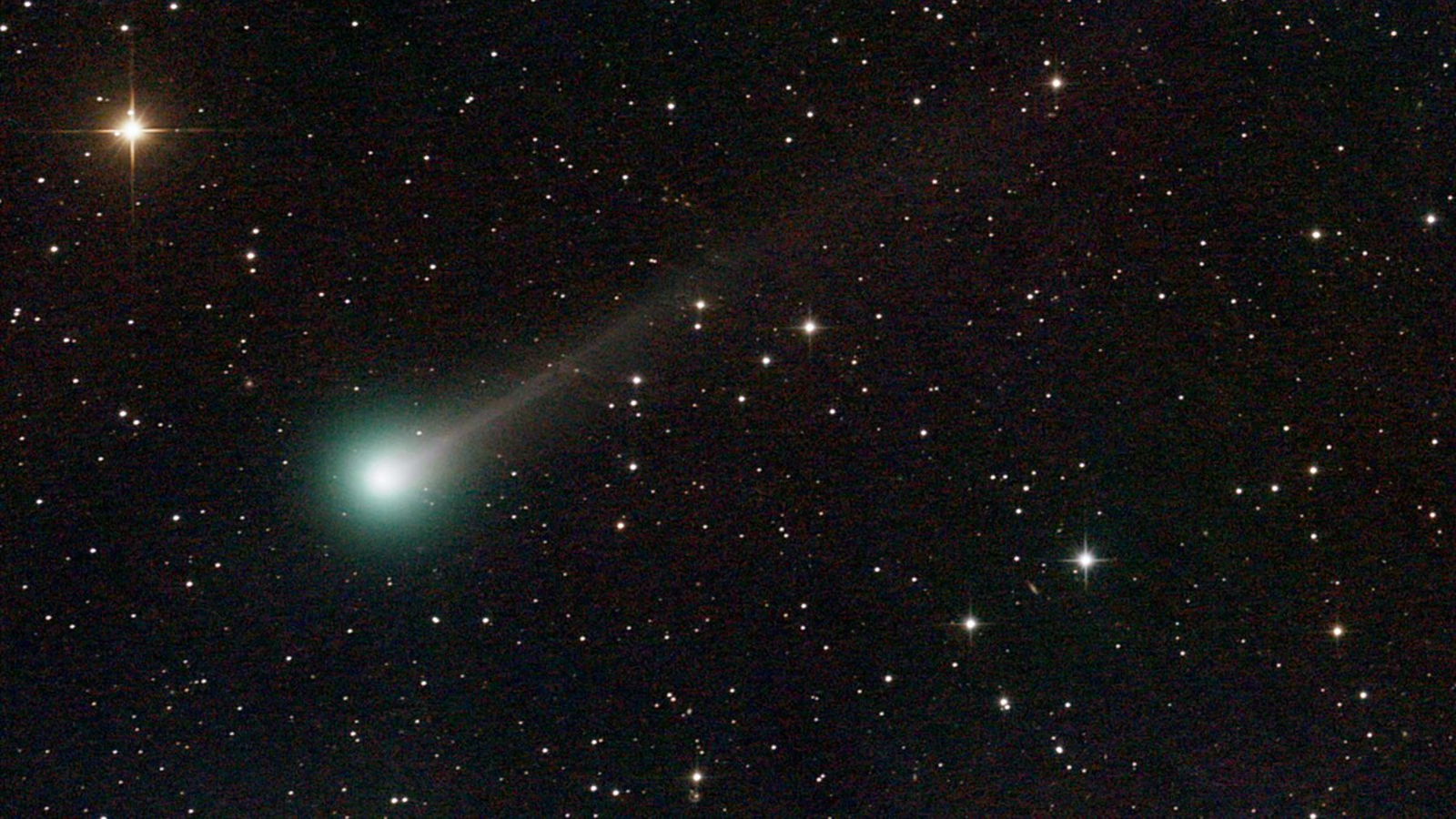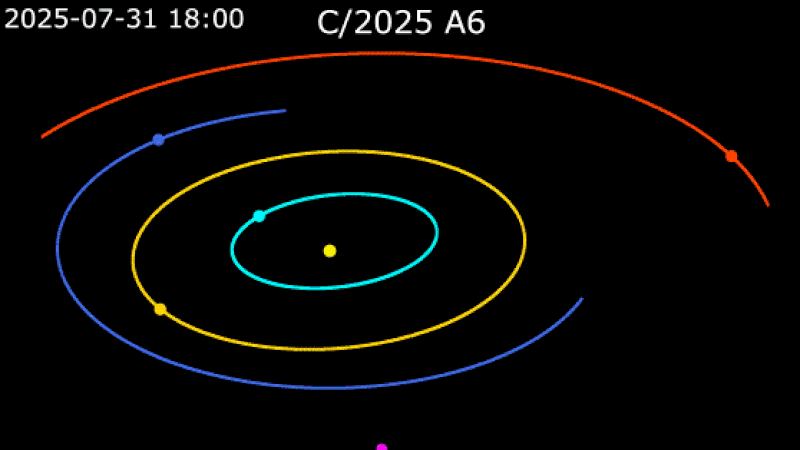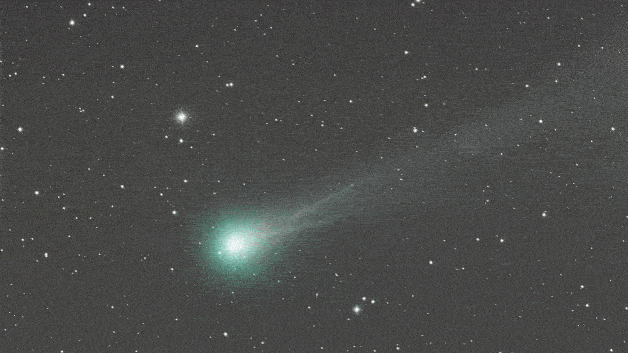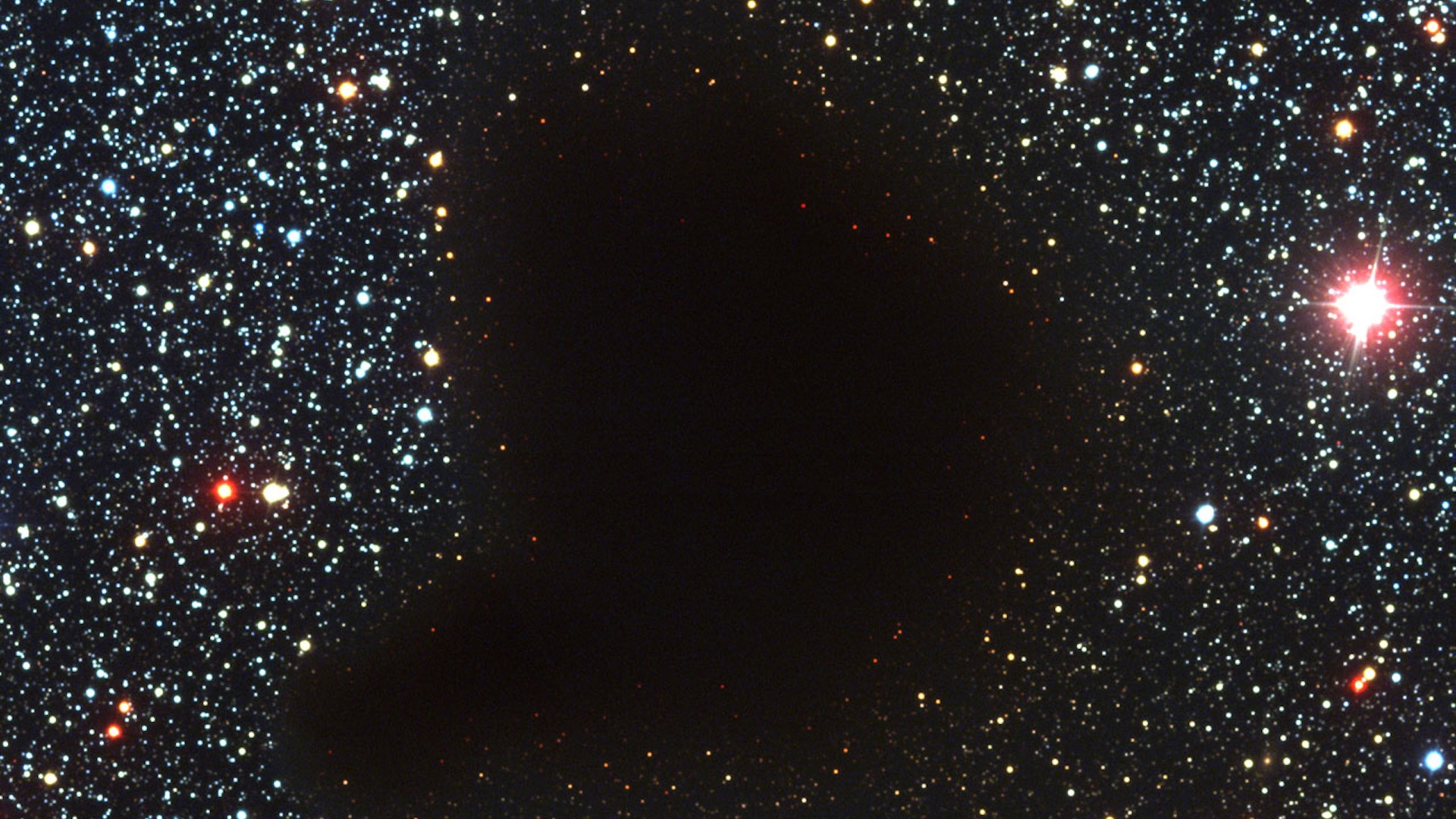Newly discovered comet 'Lemmon' may be visible to the naked eye this month — but it will look more like a lime
Comet Lemmon, discovered earlier this year, will make a close approach to Earth later this month, giving skywatchers the chance to see its surprising lime-green glow.

A newly discovered comet, dubbed "Lemmon," is gearing up for a close flyby of Earth later this month and could even become visible to the naked eye, some researchers claim. However, Lemmon may end up looking more like a different citrus fruit, thanks to its lime-green glow.
Comet C/2025 A6 (Lemmon) is a nonperiodic comet, which means it has a variable orbital period that spans over a millennium and is hard to predict. Observations hint that the comet currently orbits the sun every 1,350 years and spends a majority of this time lurking within the Oort Cloud — the giant shell of comets and other icy objects at the very edge of the solar system.
Lemmon was first spotted on Jan. 3 by researchers at the Mt. Lemmon SkyCenter observatory in Arizona's Santa Catalina Mountains as the comet was speeding toward the inner solar system at up to 130,000 mph (209,000 km/h). But it has largely gone under the radar until now, thanks to other more notable comets, such as SWAN R2 and the interstellar comet 3I/ATLAS, which are in the midst of their own solar flybys.
Lemmon will reach its closest point to Earth on Oct. 21, when it will come within 56 million miles (90 million kilometers) of our planet — more than 230 times farther from us than the moon is. A few weeks later, on Nov. 8, it will reach its closest point to the sun, or perihelion, before beginning its long journey back into the outer solar system.
As it gets closer to the sun, the comet will brighten as the cloud of gas, ice and dust surrounding it — known as its coma — expands, allowing it to reflect more sunlight back to Earth. It is expected to reach a maximum brightness, or apparent magnitude, of around 5, making it slightly too faint to be seen with the naked eye.
However, some experts are predicting that Comet Lemmon could reach an apparent magnitude of 4 — just bright enough to be seen without stargazing equipment, Live Science's sister site Space.com reported. (Apparent magnitude is measured on a reverse logarithmic scale, meaning a lower number equates to a higher brightness.)

Multiple photos of the comet show it giving off an eerie emerald glow. This is likely caused by the presence of diatomic carbon, or dicarbon — a rare, gaseous form of carbon where pairs of the element's atoms stick together — within its coma. In recent years, we have seen several other green comets, including the aptly named "green comet" C/2022 E3, which passed by us in 2023, and the "devil comet" 12P/Pons-Brooks, which turned green as it sailed past the sun in 2024. Recent photos suggest that 3I/ATLAS may be turning green, too.
Get the world’s most fascinating discoveries delivered straight to your inbox.
Lemmon also has a striking tail, which first appeared in late August and is made of ice, gas and dust that is blown off the comet by solar radiation. In late September, this tail was buffeted by a strong gust of solar wind that caused this glowing limb to ripple in space (see below).
Researchers think Lemmon's upcoming solar flyby could drastically alter its future trajectory around the sun.
Even though Comet Lemmon will only reach a minimum distance of 48 million miles (77 million km) of our home star — around half the distance between Earth and the sun — experts think its orbital period could shorten by up to 200 years. This is likely because of a recent close flyby of Jupiter, which has gravitationally tugged the comet off its original path, according to Space.com.

How to see Comet Lemmon
Comet Lemmon can already be seen with most stargazing equipment, but it will become easier to spot as it brightens over the coming weeks. It may become visible to the naked eye, but if not, it will still be easy to spot with a decent backyard telescope or a pair of stargazing binoculars.
"This comet is developing very nicely and it is already an impressive object, well-placed for observation in the morning sky," Nick James, director of the Comet Section of the British Astronomical Association, recently told Spaceweather.com. "It is definitely worth getting up for!"
The comet will be visible in the constellation Lynx, between Jupiter and the stars within the Big Dipper, and it will reach its peak brightness in mid-October, according to the BBC's Sky at Night Magazine. For most people in the Northern Hemisphere, Comet Lemmon will be easiest to spot just before sunrise or shortly after sunset.
For a more up-to-date and location-specific guide on where to spot the comet, you can search for it in online databases, such as TheSkyLive.com.
Depending on when you look and where in the world you are searching from, you may also be able to spot comets SWAN R2 and 3I/ATLAS at the same time.

Harry is a U.K.-based senior staff writer at Live Science. He studied marine biology at the University of Exeter before training to become a journalist. He covers a wide range of topics including space exploration, planetary science, space weather, climate change, animal behavior and paleontology. His recent work on the solar maximum won "best space submission" at the 2024 Aerospace Media Awards and was shortlisted in the "top scoop" category at the NCTJ Awards for Excellence in 2023. He also writes Live Science's weekly Earth from space series.
You must confirm your public display name before commenting
Please logout and then login again, you will then be prompted to enter your display name.
